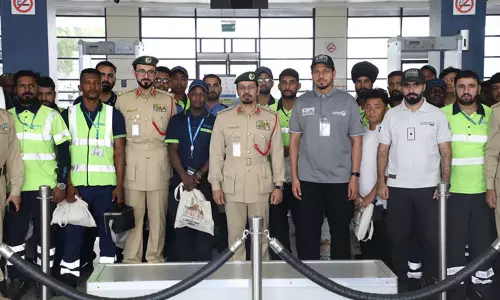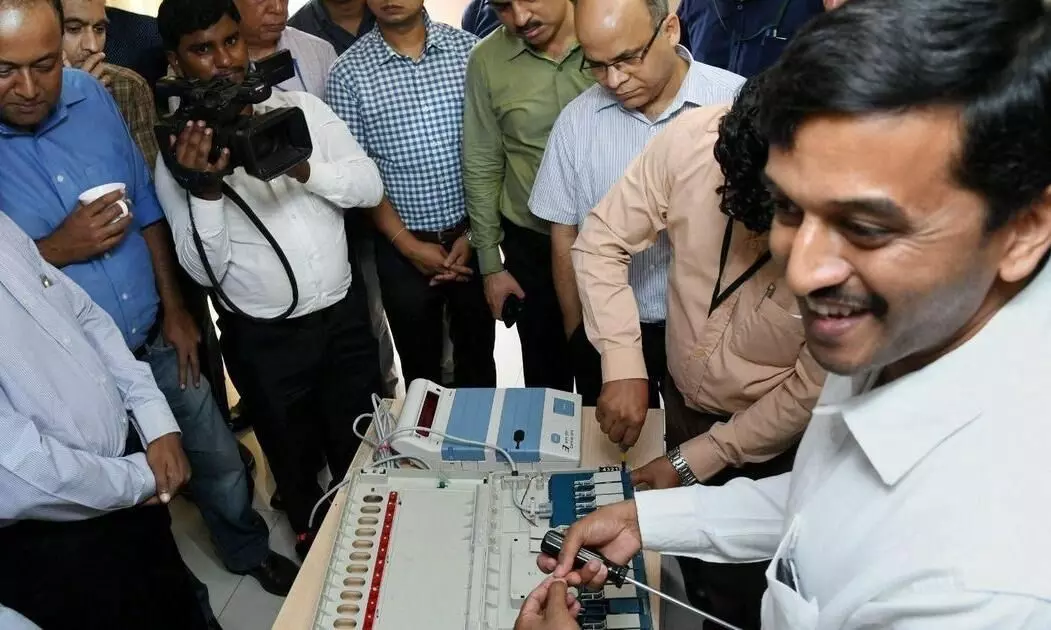
RTI reveals high rate of EVM malfunctions during 2019 Lok Sabha elections
text_fieldsSeveral states had flagged the malfunctioning of Electronic Voting Machines (EVMs) to the Indian Election Commission during the run-up to the 2019 Lok Sabha polls of the 2019 Lok Sabha polls, according to documents obtained through the Right to Information.
Documents obtained by Venkatesh Nayak, director of the Common Wealth Human Rights Initiative, shed light on the frequency of breakdowns, particularly during the critical first-level check (FLC) process, according to a report published by The Indian Express.
The FLC, a pivotal step in ensuring the functionality of EVMs, involves a technical examination of components such as the Ballot Unit (BU), Control Unit (CU), and the Voter-Verified Paper Audit Trail (VVPAT). However, reports from various states indicated a troubling trend of parts failing at a concerning rate, raising alarms among election officials.
EVMs breaking down during the polling process in previous elections had sparked political uproar, highlighting the significance of addressing these technical issues before elections. The documents reveal persistent reports of high rejection rates, particularly for VVPATs and CUs, throughout the FLC process and even as polling dates drew nearer.
Officers from several state Chief Electoral Officers' (CEOs) offices, including those from Nagaland, Arunachal Pradesh, Andhra Pradesh, Bihar, Karnataka, and Kerala, expressed apprehension and requested additional machines due to the elevated failure rate.
While the Election Commission has not officially defined a specific rejection rate as unacceptable, reports indicated rates as high as 30% during the FLC, far exceeding the presumed acceptable rate of 5%.
A status report from Uttarakhand revealed a staggering 38% rejection rate for control units, while the Delhi CEO's office flagged a high rate of VVPAT failure in specific districts, prompting requests for replacements. Similarly, the Andaman CEO's office reported over half of the VVPATs used for training and awareness had malfunctioned, necessitating additional units.
While acknowledging that EVM malfunctions do not necessarily imply rigging or tampering, the persistent instances of breakdowns raised concerns about potential interruptions in the voting process and their impact on voter turnout. Despite efforts to address the issue, reports of failures persisted even during subsequent elections, including Assembly polls in Bihar, Punjab, Uttarakhand, and Uttar Pradesh.
In response to the mounting concerns, an officer at the Election Commission wrote to the Chairman and Managing Director of EVM manufacturers, Bharat Electronics Limited (BEL), and Electronics Corporation of India Limited (ECIL), highlighting the higher rejection rates observed during FLCs conducted before Assembly polls in certain states. However, BEL and ECIL did not respond to queries regarding the matter.
In its response, the Election Commission updated its Frequently Asked Questions (FAQs) section on EVMs, acknowledging the need for corrective actions to address the issue and ensure minimal inconvenience to voters.
The commission emphasized the importance of post-election analysis to enhance EVM and VVPAT performance and reduce replacement rates during actual polls.












